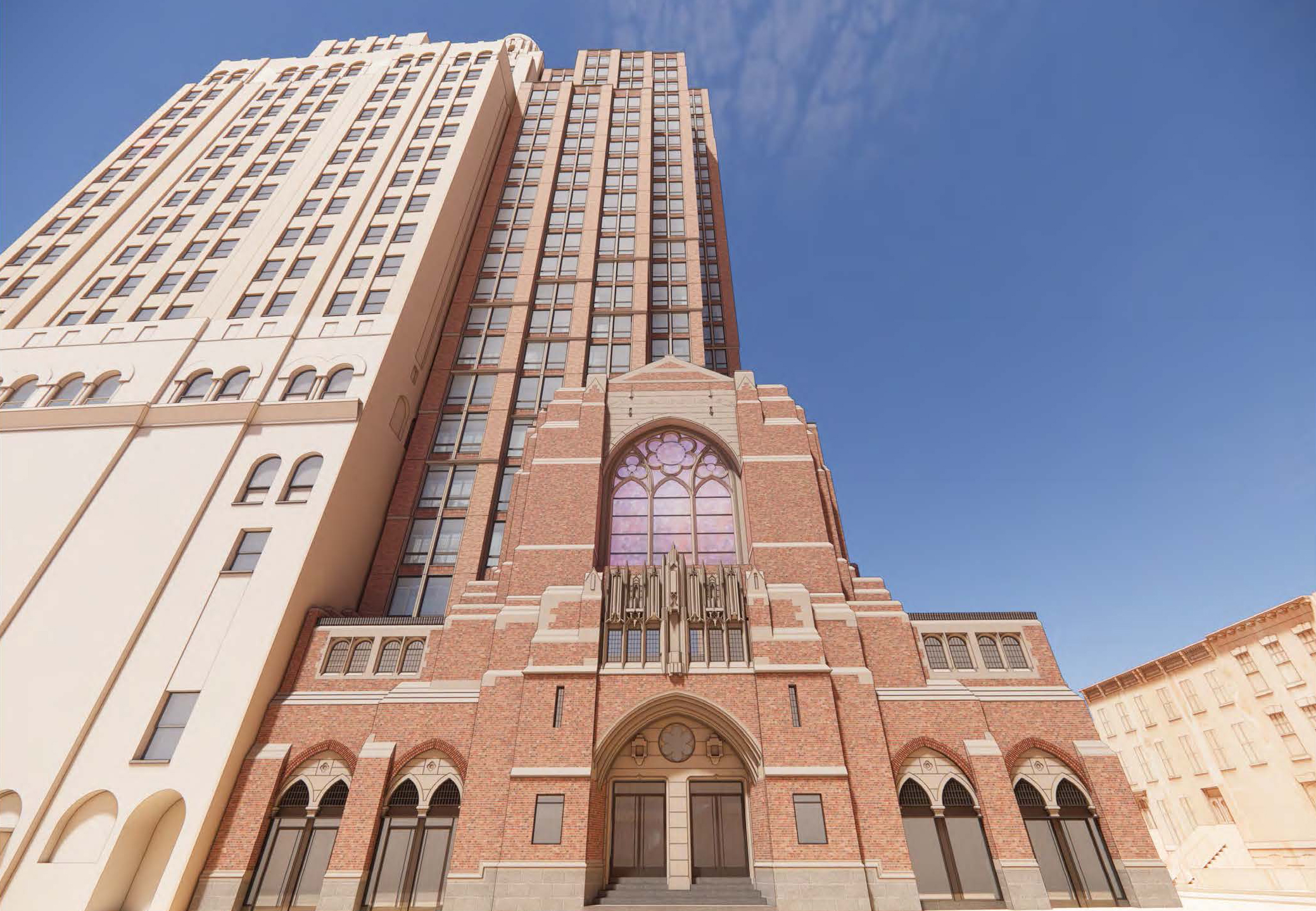Navy Yard Kicks Off Supermarket RFP Process
With the fate of Admirals Row all but set in stone, the Brooklyn Navy Yard Development Corp. moved ahead yesterday with its plans to find a developer to build a 40,000-square-foot supermarket and an additional 60,000 square feet of additional retail and light industrial space on the six-acre plot of land at the southwest corner…

 With the fate of Admirals Row all but set in stone, the Brooklyn Navy Yard Development Corp. moved ahead yesterday with its plans to find a developer to build a 40,000-square-foot supermarket and an additional 60,000 square feet of additional retail and light industrial space on the six-acre plot of land at the southwest corner of the Navy Yard that is still controlled by the Federal Government but is expected to come under the BNYDC’s control in the near future. “We think this is a very unique opportunity for a developer to secure a long-term lease on a site where you can put a large supermarket, said Navy Yard chief Andrew Kimball. The winning developer would have to also finance and perform the rehabilitation of the Timber Shed and one of the Admirals Row houses, a task that could cost $25 million or more. The deadline for responses to the RFP is October 19. A complete press release is included on the jump.
With the fate of Admirals Row all but set in stone, the Brooklyn Navy Yard Development Corp. moved ahead yesterday with its plans to find a developer to build a 40,000-square-foot supermarket and an additional 60,000 square feet of additional retail and light industrial space on the six-acre plot of land at the southwest corner of the Navy Yard that is still controlled by the Federal Government but is expected to come under the BNYDC’s control in the near future. “We think this is a very unique opportunity for a developer to secure a long-term lease on a site where you can put a large supermarket, said Navy Yard chief Andrew Kimball. The winning developer would have to also finance and perform the rehabilitation of the Timber Shed and one of the Admirals Row houses, a task that could cost $25 million or more. The deadline for responses to the RFP is October 19. A complete press release is included on the jump.
Grocer to Edge Out Admirals in Navy Yard [Crain’s]
Proposals requested for Brooklyn Navy Yard [TRD]
RARE OPPORTUNITY TO DEVELOP SUPERMARKET
& RETAIL CENTER AT BROOKLYN NAVY YARD
Proposals sought to transform six-acre site in underserved community
Brooklyn, NY (July 9, 2009) A rare opportunity to develop a neighborhood retail center anchored by a large format supermarket is now available at the Brooklyn Navy Yard. The Brooklyn Navy Yard Development Corporation (BNYDC) is seeking proposals to develop a six-acre site, known as Admiral’s Row, on the western edge of the Yard, in the midst of a densely populated part of the city that is underserved by large format supermarkets.
The request for proposals (RFP) seeks developers interested in building the retail center that will include a large format supermarket of no less than 40,000 square feet, as well as an additional 20,000 square feet of neighborhood retail space. According to the RFP, optimal development of the site also will include a minimum of 40,000 square feet on an upper floor to accommodate light industrial uses and could include additional upper floor commercial uses. The site is easily accessible by subway and bus, as well as by bridges and highways and will include significant on-site parking. The project requires the renovation of two historic structures on the site. A pre-submittal meeting and site visit will be held for interested developers on Tuesday, August 11, 2009 and responses are due by October 19, 2009. The RFP is available online at www.brooklynnavyyard.com.
In addition to the rapidly growing surrounding communities, nearly 40,000 residents live within a ten-minute walk of the site and 5,000 people work at the Navy Yard everyday providing a built in consumer base for the retail center, said Andrew Kimball, president and CEO of the Brooklyn Navy Yard Development Corporation, which manages the 300-acre industrial park on behalf of the City. Our goal is to put this property back to productive use by providing a unique opportunity for developers with the capacity and track record of establishing supermarkets and community-oriented retail that will serve the community and create local jobs.
The development of Admiral’s Row will continue the expansion underway at the Brooklyn Navy Yard — its largest growth since WWII adding over 1.5 million square feet of new space and 2,000 jobs over the next two years. BNYDC’s commitment to sustainable infrastructure investments and new green buildings has made it a national model for sustainable industrial parks. The development of Admiral’s Row will build on this track record of sustainability and success.
The Administration of Mayor Michael R. Bloomberg has made a significant commitment to improving and modernizing the Yard’s infrastructure by allocating $200 million in City capital funding. The Yard’s existing four million square feet of space — currently consisting of 40 rentable buildings with more than 240 tenants — is 99 percent occupied
About the Brooklyn Navy Yard
The Brooklyn Navy Yard is owned by the City of New York and managed by the not-for-profit Brooklyn Navy Yard Development Corporation. BNYDC leases space in the Yard, promotes local economic development, develops underutilized areas and oversees modernization of the Yard’s infrastructure. The corporation’s board of directors is comprised of leaders of Brooklyn’s economic development community. Established in 1801, the Brooklyn Navy Yard served as one of America’s preeminent military facilities for more than 150 years. Closed by the federal government in 1966, the City of New York subsequently assumed ownership and re-opened the Yard as an industrial park.
# # #





The neglect of the Row, even in terms of controlling vegetation, was just part of a pattern of abandonment that led to the present situation. Everyone concerned – the Feds, National Guard, Navy Yard, city, whomever, just kept passing the buck around and around, everyone claiming it wasn’t their responsibility to maintain or even protect the site. If someone had spent just a couple thousand dollars to buy and affix tarps on the roofs 10 years ago, or had boarded up the windows, the houses would not be in the state that they are now. The whole sordid mess is just disgusting, more so because it was preventable.
bkre- thanks for clarifying. Of course now it’s obvious the situation is even more confusing, but at least it’s not my confusion 🙂
I think the confusion here, bxgirl, is that the City owns the rest of the yard, but not Admiral’s Row. SO it’s accurate to say that the City owns the yard, but for the purposes of that statement, “the Yard” does not include Admirals Row, which is still owned by the Feds, for now.
I agree with you though that Minard kind of misses the point. The reason the private sector would come in and clean up this mess that was created by the Feds, is that the private sector thinks it will be able to turn a profit doing so. Ain’t nothing wrong with that.
I don’t think the mistake is Brownstoner’s. Its in the RFP or the release. I think its just the standard language the Navy yard Devlopment Corp uses. I also don’t think all the site was turned over at once either. Its been turned over in Parcels. The Navy maintained a small part for a while and I don’t think that the Hospital and other historic areas(including the cemetery) was turned over until much later. The Navy Yard Development people have been paying and maintaining the hospital etc and they are very expensive to do. They only get so much money and have a commercial operation to run. There is only so much money….
smeyer418- I thought that was incorrect but figured Mr. B must know better than I (ha!). But the rest of my comment still stands regarding private developers. Thanks for the correction.
The city doesn’t own the Admiral(officers) row’s housing site. That is still owned by the Federal Government- assigned to the National Guard Bureau. When the Navy(US Government) turned over the balance of the Navy yard site, they withheld this portion for its own use. It still hasn’t been officially turned over but it will be shortly. The feds sold the old Admiral’s house directly at an auction.
NY City regs limit large box stores and there is a demand for good large box store sites.
the City has owned the Yard since 1966 according to the post above. If that is the case, the mess is really the City’s neglect. In any case, the site is a great location with little to no area competition for a grocer so its prime. And why shouldn’t they give something back to the public for this? Private developers have gotten free passes too often (Ratner and Ward’s Bakery come to mind). They get all kinds of abatements and tax breaks- at the public expense. So why shouldn’t they be required to do something for the commmunity at large? We are losing a group of historic houses that are part of our military history (which we crow so loudly about when we feel like waving the flag). Those buildings ha ve been allowed to fall apart (yes, yes- I know- no one had the money. And that in itself is a crock considering how much money our local, state and federal politicians waste ever day).
I have not really followed this terribly closely, just knowing what has been written in the papers but it seems to me that the Navy Yard or the Army or whoever controls the site should at least have the decency to clean it out a little and stabilize the wrecks before they submit an RFP basically asking the private sector to clean up the mess left behind by the Navy, the Army, and the Yard.
This is a typically lazy approach by the public sector. Why would I, as a private developer, with my pick of all kinds of fallow sites around town, pick an overgrown jungle site where one can barely see the structures or the topography? Why would I take on that liability when the government clearly refuses to even set foot on the property?
I think you mean that the site is still controlled by the Feds, not the state.